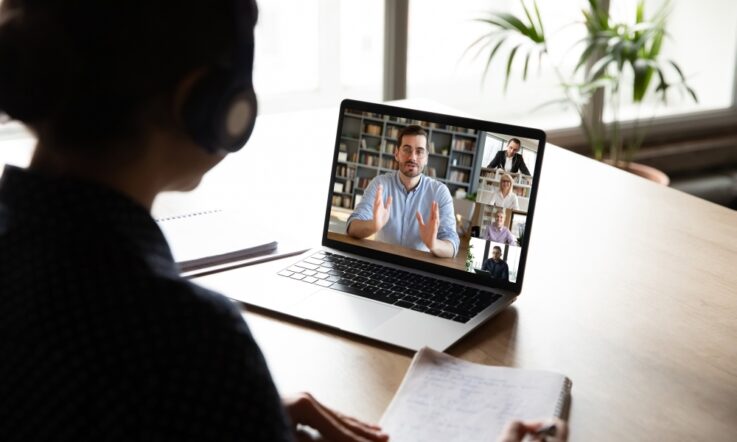The Knox School in Melbourne has been working with academics at Monash University to research teachers’ and leaders’ experiences of remote teaching and learning during lockdown, and how this has impacted their work going forward. The first of three articles in this series shared how teacher agency began to shape the work of middle leaders at the school. This latest instalment looks at how real time communication redefined the nature of school community collaboration.
The Knox School, an independent co-educational K-12 school, caters for 680 students. Its website defines the school community as one which supports a select range of core values, including respect, care and empathy. During the lockdown, these core values contributed to enabling a community of active learners involving all stakeholders – students, teachers, parents and leadership.
Three academics from Monash University were contracted to research the school’s shift to remote learning, and leadership was keen to learn how best practice from this experience might be carried forward and integrated into the school’s curriculum and community. Data from online focus groups with 50 teachers revealed three areas of change: teacher agency; community collaboration and teacher wellbeing.
In relation to community collaboration, two key findings emerged: recognition of the valuable and essential contribution parental support plays in respect to nurturing quality student learning, particularly in the real time online space; and, recognition that effective community collaboration relies on trust between all participants involved in the learning process, particularly trust in how teacher professional knowledge guides and shapes educational best practice.
Here Dr Rami Stiglec, a middle leader at the school, provides insight about the support provided to teachers, students and parents and the emerging tensions within the online learning space. His contribution highlights what was required of leaders during this time.
Middle leaders and community collaboration
At the beginning of 2020, Rami moved to a newly created leadership position at The Knox School: Manager Academic Program. This was a curriculum-focused role which included auditing whole-school curriculum for the Victorian Registration and Quality Association. The pandemic changed this role to one of leading staff and students to integrate technology during remote learning.
Rami noted that, during 2020, middle leadership was founded on ‘flexibility’, and the ‘ability to pivot priorities at a moment’s notice’. The first priority was a need to build the technical capacity of staff and students. Subsequently, professional learning was successfully completed over a six-day period to consolidate and upskill the whole school to use Microsoft Teams for teaching and learning. This approach was key in enabling the whole school community to collaborate, and access online learning.
Rami observed staff were able to quickly adapt to Teams. He also noted a need to allow and encourage teachers to explore the technology to find new and innovative ways to implement curriculum during remote learning. Teachers were also encouraged to share their learning with each other.
Inviting staff to share what they were proud of, and assisting them to recognise and own the quality of their own professional practice, became an important pedagogical tool to support teacher agency while collaborating with students and their families during online learning.
Moving forward with community collaboration
Once teachers were confident with implementing the delivery of the curriculum online, Rami identified the next step was to ‘utilise the new communication structures to enable the school to thrive as a learning community’. From a middle leader perspective, introducing online and asynchronous learning times allowed the broader school community to better communicate with each other in various ways:
- Students who were reluctant to ask questions in class sent private Team chat messages to teachers, who responded with personalised learning.
- Parents and students easily communicated with teachers via live Teams or Zoom meetings during school hours, enabling better support for students.
- Staff in the same faculty used specific Team channels to share ideas and resources in a collegial manner with ease.
Despite the significant and overall successes, Rami observed some tensions in the online learning space.
The digital communication is a double-edged sword for teachers. The parents and students had greater access to the staff, and the pressure to provide instant feedback at all hours of the day and night increased.
This tension was mitigated through maintaining clear school-wide parameters, and was combined with teachers framing the expected role of parents in the online learning space.
Parents were provided with the opportunity to communicate with teachers in lockdown as per regular routines and processes and this was promoted via the regular communications channels. Just as prior to lockdown, teachers were accessible in working hours, between 8:30am and 5pm and that did not change, and, as usual, leadership encouraged teachers to exercise professional judgement about the need to communicate with parents beyond these times.
Parent-teacher communication in lockdown was initially via email or phone call. Each teacher also had access to a Teams and Zoom account – these were both added as digital tools during lockdown and now remain in place. Parents were not given access to their child’s Teams account unless the child shared it with them. If a ‘face-to-face’ meeting was required and the student needed to be involved, such as student-parent-teacher interviews, the student’s Teams account was used. If a more confidential conversation between parent and teacher was required, Zoom was utilised. These guidelines were in place prior to lockdown, were used during lockdown, and now remain in place.
Reciprocity of emotional support was experienced as teachers provided feedback to parents, reducing their stress and reassuring their efforts. Parents provided feedback to teachers, acknowledging their work, which was motivational for teachers, who noted a significant growth in respect for, and knowledge of the complexity of teaching by parents.
Teachers were able to respond to challenges as they arose. Rami noted:
Some students were able to disconnect from their learning by turning off their camera and microphone during synchronous lessons, making real-time teaching and learning less effective as teachers could not use non-verbal signs to ascertain which students were struggling.
While there is no doubt that subtle non-verbal cues carry less ‘weight’ in an online learning environment, experimentation by teachers showed that segmentation of the class into smaller working groups brought students back into discussion and raised engagement levels.
From Rami’s perspective, remote learning introduced real time communication and this change redefined the nature of community collaboration at The Knox School.
The challenges and opportunities of a new operational paradigm for the school through real time communication and new communication channels supported overcoming one of the greatest changes to the school’s pedagogical practices.
The learning from this experience has been retained for each stakeholder group. Teachers feel more at ease to call on parental support to help direct student learning. Parents have improved clarity regarding their role in the education process, and, finally, students benefit from the community collaboration towards learning.
One of the most powerful benefits of harnessing online learning, according to Rami, was ‘the introduction of asynchronous learning times and how the broader school community were better able to communicate with each other’. Improving communication between community stakeholders has been an important change, and will continue into the future.
The school continues to promote active involvement of parents, highlighting the contribution they make in the educative process. The emotional reciprocity between teachers and parents is valued and encouraged, with the aim to achieve positive collaborations which enhance student learning. Parental involvement is positioned as an opportunity to build teacher capacity to articulate professional insights about curriculum delivery and pedagogy.
Stay tuned: The final article in the series explores how teacher wellbeing has influenced leadership practice at the school.
Teacher would also love to hear what’s happened in other schools. If you’d like to share your story with readers, get in touch with the team via teachereditorial@acer.org
As a school leader, have you gathered feedback from staff about their experience of teaching and learning during the COVID-19 restrictions? How has this informed your plans for the next 12 months?
Thinking about your own experience, what would you like to take forward into your teaching or leadership practice during 2021? What would you like to leave behind?



